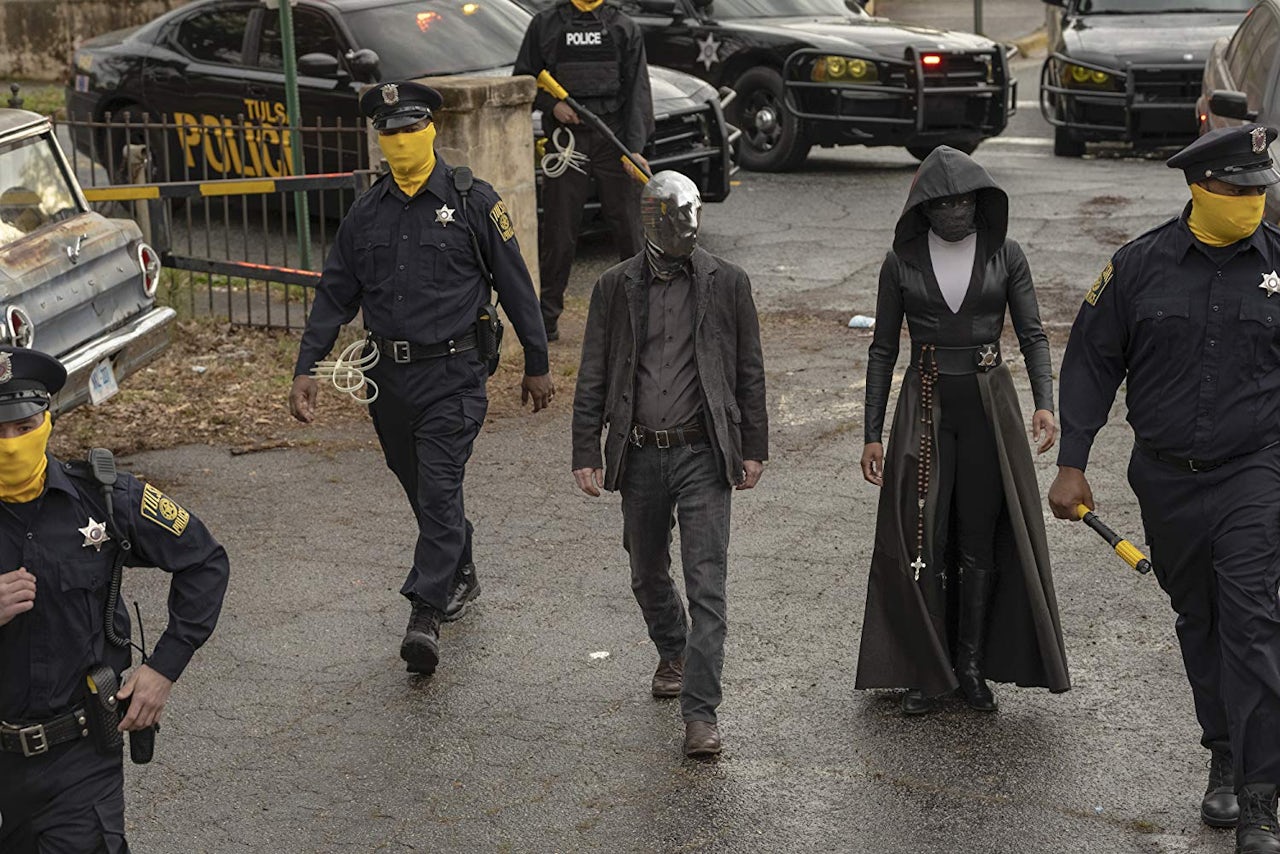Watchmen, a new live-action HBO series spun out of the acclaimed comic book, premiered last night. The reviews have been overwhelmingly positive, which is personally confusing because of how thematically unsubtle and awkwardly referential the show is, but taste is taste, and TV critics have theirs. That’s life.
However, there’s one peculiar anachronism from the pilot that’s going to drive me insane if I don’t talk it out, so here we are. The original Watchmen, which was published by DC Comics between 1986 and 1987, takes place in 1985, in a world nearly identical to ours with one crucial distinction: Masked vigilantes have operated in the U.S. since the 1930s. From there, the country’s history proceeds more or less the same… until the emergence of Doctor Manhattan, a superhero with godlike abilities, who gives the U.S. a profound military advantage; with his help, the U.S. definitively wins the Vietnam War. Manhattan’s existence creates a ripple effect that subtly affects how society progresses; for example, electric cars are widely adapted because he can synthesize the material used for their batteries.
This is important to remember, as well as a general theme of the comic: small events have large-scale ramifications we can barely perceive, because life is beautiful and mysterious. Again, this is important to remember.
The pilot of Watchmen begins with a brutal recreation of the 1921 Tulsa race riots before cutting to 2019, 34 years after the events of the original Watchmen. Just outside Tulsa, an unidentified white man listens to Future’s 2019 song “Crushed Up,” before he’s pulled over by a cop. Some tense back-and-forth happens, the cop is shot, the man is revealed as a foot soldier of a white supremacist army influenced by Rorschach, the ultra-violent, ultra-conservative viligante from the original comic, and the plot kicks off in earnest.
Today you can read 500,000 articles speculating about that plot, but let’s back up a second. The Future song isn’t just a backgrounded audio decision from the music supervisor. We watch the man actively enjoying the song in the episode, before he turns it off as he’s pulled over. This makes no sense.
At the conclusion of the original Watchmen, the villain Ozymandias masterminds a terrorist event on New York City that results in the death of half its citizens. We can assume around seven million people lived in New York then, as that’s what The New York Times says, and as established Watchmen adhered closely to the real world. 3.5 million people dying — that’s a lot.
Statistically, it seems possible that these deaths would include many of the artists essential to the rise and growth of hip-hop, which in 1985 was still a relatively nascent art form, and heavily influenced by what was coming out of New York (which, of course, is the city where hip-hop was born). Slick Rick, DJ Kool Herc, Salt-n-Pepa, Doug E. Fresh, Biz Markie, Afrika Bambaataa, KRS-One — name a Golden Age hip-hop artist, and odds are they came up in New York. 1984, the year before Watchmen takes place, had seen the founding of the New York-based label Def Jam, which would soon popularize releases by rappers like Run-DMC and LL Cool J that would gain massive cultural and commercial traction. Over in Brooklyn, a young Jay-Z and Notorious B.I.G. were practicing their craft, as were the members of the Wu-Tang Clan over in Staten Island.
You can go on and on like this, but the point is that the mass death of so many of the city’s residents would’ve had a devastating, transformative effect on hip-hop. Future grew up in Atlanta, but in 2012 he told the Washington Post he decided to get into rap after attending a concert featuring Jay-Z, Method Man, Redman, and DMX… all of whom essentially got their start in New York. If these artists and artists like them die in the attack, which concert does a young Nayvadius DeMun Wilburn attend that inspires him to start rapping? Who can say? Stylistically, Future’s Atlanta rap forbearers — artists like OutKast, the Dungeon Family, Gucci Mane, and T.I. — were often defined by their contrast with New York rappers. It’s impossible to imagine how the Atlanta scene, which today is heavily influential, would’ve developed in the absence of a New York one; it’s impossible to confidently map out where hip-hop would be in 2019, period, if its formative artists were killed by that terrorist attack in Watchmen.
That’s not even considering the massive psychic impact that this terrorist attack would have on the United States. We’re led to believe that it leads to the immediate cessation of the Cold War, and a global peace as every country in the world is suddenly concerned with the alien presence that seems to be behind the attack on New York. Maybe hip-hop survives… but maybe its thematic purviews pivot wholly, given the mass deaths, and fail to gain traction with a suddenly traumatized nation. Maybe in 2019, the dominant art form is, like, folk. It’s very funny to imagine a rural racist listening to Future before he goes to his KKK meeting, but it’s a giant leap of faith.
On the other hand: alright, sure, whatever. Maybe I’m being overly detail-focused. Maybe I’m being a huge pedant. But the Watchmen show is so defined by its fidelity to imagining what the world would be like in the wake of the Watchmen comic that it’s simply unbelievable that Future would exist there as he does in our world. (“Crushed Up” is from his seventh studio album, released this year.) I can forgive plenty about Watchmen because it is just a TV show, and thus not that deep, but this is just wrong.
